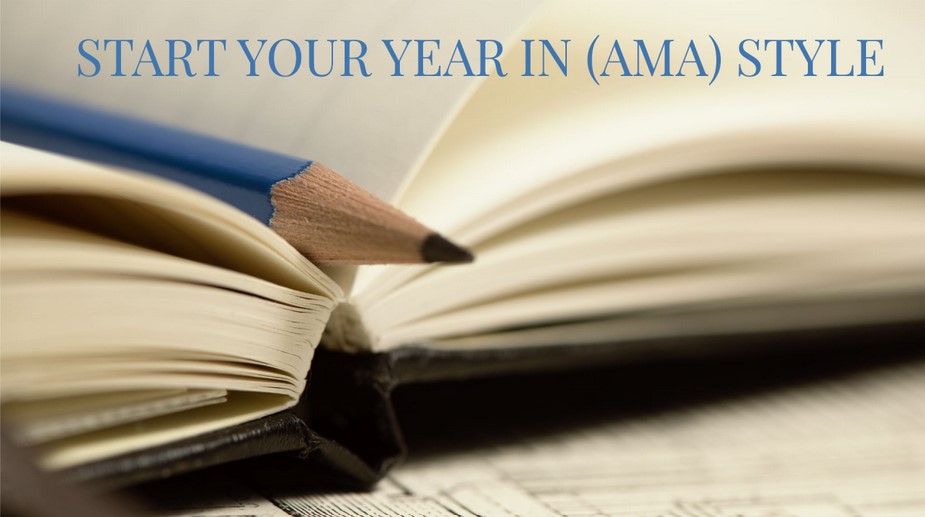Chapter 3 of the AMA Manual of Style reviews how to properly reference. Here, we cover the citation and referencing of a scientific journal article.
References serve 3 purposes: to support a point, to credit the work of others, and to direct readers to further resources. References should provide enough information for others to easily identify and retrieve the material in question.
To ensure integrity of your resources, you should always consult the primary source, and never cite a reference you have not read yourself. Only published material should be referenced. Material not yet accepted for publication or personal communications should not be used as references.
Each reference is divided into bibliographic groups, which are separated by periods. Within a group, commas separate similar elements, semicolons separate different elements, and colons are used in between titles and subtitles as well as after a descriptive phrase such as “Presented at.”
Lastly, references should be consecutively numbered in the order in which they are cited in the text. Furthermore, each reference should be cited in the text via superscript numbers.
Citations
Citations should be outside periods and commas, but inside colons and semicolons. If consecutive references are cited, use hyphens between the first and last reference in the series; if non-sequential, use commas without spacing to separate multiple citations.
Avoid citations immediately after a number or abbreviated unit of measure, to avoid confusion between citation and an exponent.
If citing different page numbers from a single reference, the page numbers are included in the citation, but the source appears only once in the reference list.
Authors
In reference lists, use author’s name followed by initials, with no periods.
- List all names, unless there are more than 6, in which case list the first 3 names followed by “et al.”
- Do not use “and” between names.
- Roman numerals and abbreviations such as Jr and Sr may follow the authors’ initials. Note that JAMA prefers II over 2nd.
- Surnames that contain prefixes or particles are spelled and capitalized according to the preference of the named individual.
- For hyphenated given names, both initials appear, without a hyphen.
- For references authored by a group or committee, the name of the group is used in place of author surnames.
- For references with both individuals and groups, the group names goes at the end, without “for” or “and,” and is separated from the authors by a semicolon, not a comma.
When authors are mentioned in the text, only surnames are used.
- For 2-author references, use both surnames.
- If more than 2 authors, use the first author’s surname followed by “et al,” “and coauthors,” or “and colleagues.”
- Do not use possessive of “et al.” Instead, rephrase the sentence.
- In nonclinical pieces, the first author’s first name and honorific may be used at firs mention.
Titles and Subtitles
For English-language titles, capitalize the following:
- The first letter of the first word.
- Proper names.
- Names of clinical trials or study groups.
- Abbreviations that are ordinarily capitalized.
For English-language titles, italicize the titles of books, government bulletins, documents, and pamphlets.
Subtitles begin with a lower case, unless the first word is a proper noun. They are separated from the title by a colon, unless the title ends in a question mark, in which case the question mark is retained.
Referencing a Journal Article
A journal article reference should contain the following:
- All authors’ surnames and initials (unless more than 6, in which case only supply the first 3 authors, followed by “et al”) followed by a period.
- Title of article and subtitle, if any, followed by a period.
- Name of the journal, abbreviated and italicized, followed by a period.
- Year of publication, followed by a semicolon.
- Volume number.
- Issue number (within parenthesis), followed by a colon.
- Location (page[s] or e-locator) as a range, followed by a period.
- DOI (if supplied), with no period following.
If an online article has no DOI, then add the date it was accessed and the website.
If article is a preprint, finish with “Preprint posted online Month xx, 20xx. doi: …”
Similarly, if an article is accepted but not edited, finish with “Accepted manuscript. Published online Month xx, 20xx. doi: …”
Reference:
AMA Manual of Style Committee. AMA Manual of Style: A Guide for Authors and Editors. 11th ed. Oxford University Press; 2020
